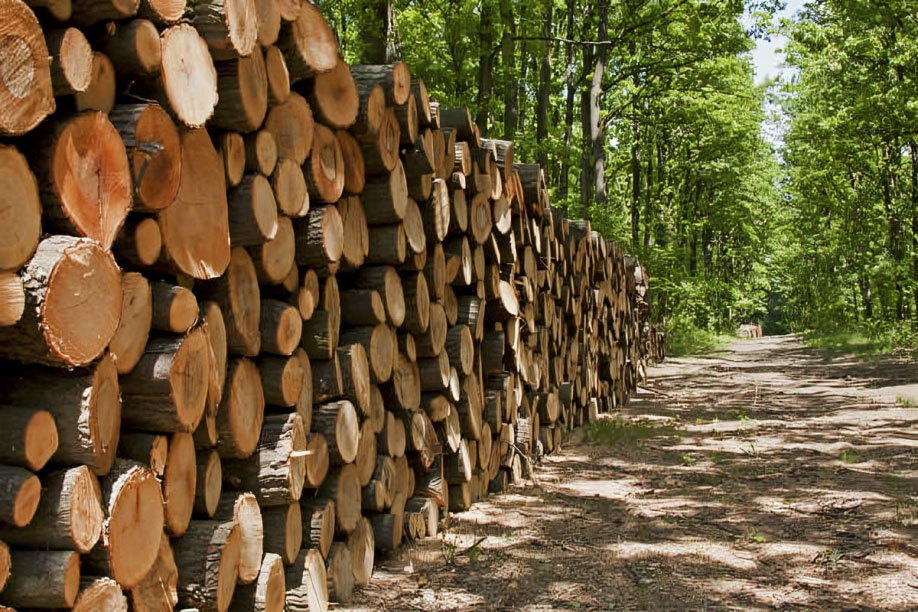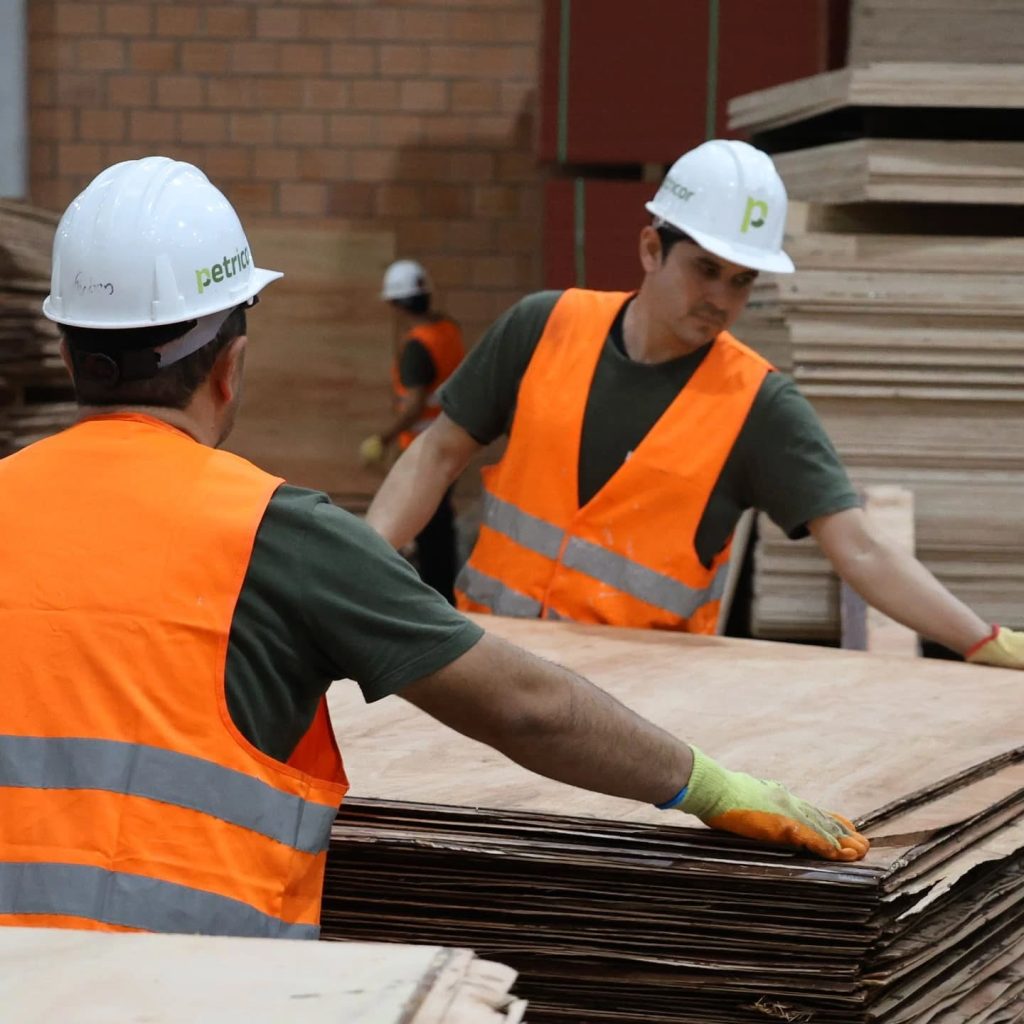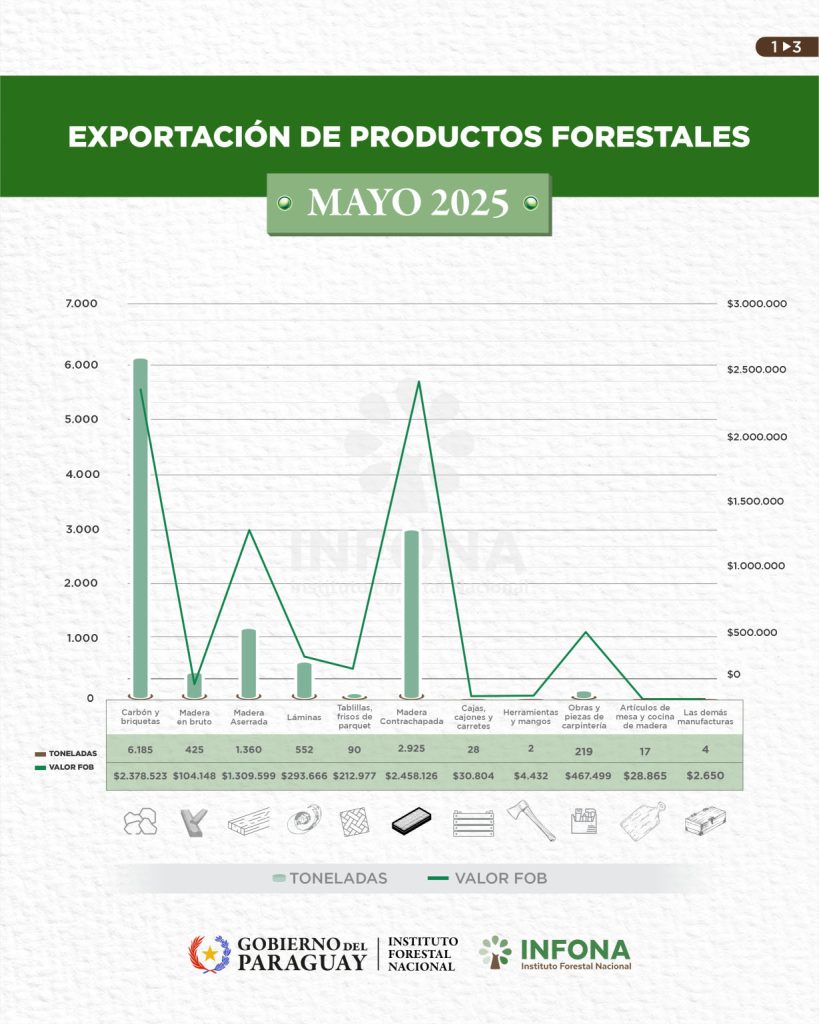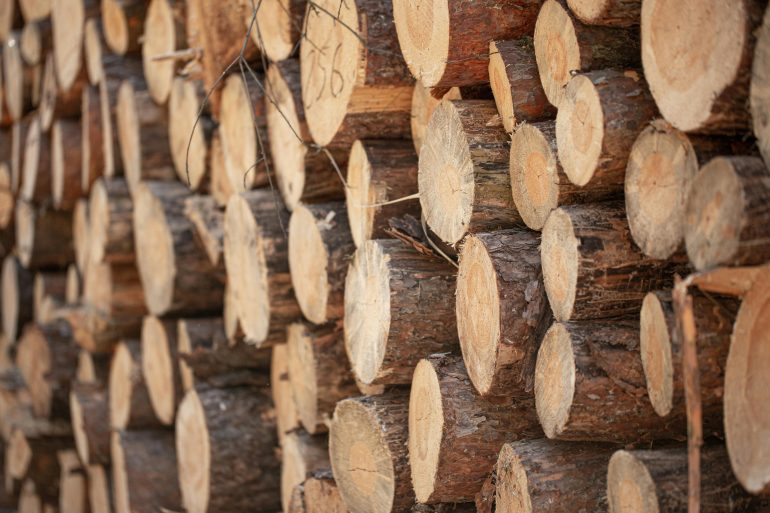Paraguay’s forestry exports have reached historic highs in 2025, particularly in the plywood segment. Key markets, including the United States, China, Germany, and Portugal, reflect the country’s impressive market diversification and sustained global appetite for high-quality Paraguayan forestry products. In May 2025, plywood exports reached a record high for the third consecutive month, totaling 2,925 tons, a 6.15% increase from the previous month, and surpassing the five-year average by over 45%.
The National Forestry Institute (INFONA) emphasised that this growth reinforces Paraguay’s role as a reliable supplier of value-added wood products. It positions the country as an increasingly competitive player in the global forestry market. The Asunción Times investigates the factors driving Paraguay’s forestry boom.
The forestry industry in Paraguay
Paraguay’s forestry sector is rapidly evolving into a cornerstone of the national economy. The industry’s strength is rooted in fast-growing plantation forests, and an expanding network of wood-processing industries.
The country currently has around 205,000 hectares of forest plantations, primarily located in Paraguay’s Eastern Region, with a consistent annual growth rate of 50,000 hectares. Species chosen are mostly eucalyptus and pine, due to their rapid growth cycles, and commercial viability.
The wood is primarily used for plywood, sawn timber, biomass, and charcoal, positioning Paraguay as a growing supplier of processed and certified wood products rather than just raw materials.
In terms of industrial capacity, Paraguay is home to 464 forestry industries and 73 establishments registered with INFONA. Caaguazú stands out as the department with the highest concentration of forestry industries, with more than 80% of the sawmills.


The record-breaking 2025 numbers
According to INFONA’s official report, Paraguay’s forestry sector continues its upward trajectory.

In May 2025, plywood exports totalled 2,925 tons, marking the third consecutive monthly record. It reflects a 5.63% increase over the previous month.
In FOB (Free on Board) value, plywood exports reached US$ 2,458,126. It represents a 6.15% increase and exceeding the five-year average by more than 45%.
Monthly plywood export trends (2025):
- January: 1,124 tons – FOB USD 895,875
- February: 1,972 tons – FOB USD 1,691,858
- March: 2,626 tons – FOB USD 2,228,676
- April: 2,769 tons – FOB USD 2,315,784
- May: 2,925 tons – FOB USD 2,458,126
In addition to plywood, sawn timber is also showing notable growth. In May, 1,360 tons were exported, generating US$ 1,309,599 in revenue.
Where does the wood come from?
INFONA’s official interactive forest cover dashboard, shows that Paraguay had 17.7 million hectares of forest cover in 2022, representing 44.3% of the national territory. This coverage is distributed among:
- Native forests: 14,651,350 ha (82.6%)
- Palm groves: 2,871,678 ha (16.2%)
- Forest plantations: 204,632 ha (1.2%)
In terms of regional distribution, the Western Region accounted for 14.7 million hectares of forest cover, 82.8% of the national total. The Eastern Region comprised 3 million hectares, or 17.2% of the total.
Despite the Western Region’s dominance in native forest area, commercial plantation forestry is concentrated in the East, where infrastructure and climate are more suitable for fast-growing species.
The departments of Caaguazú, San Pedro, Concepción, Alto Paraná, and Itapúa are the country’s primary hubs for plantation forestry. These areas host extensive reforested zones, sawmills, and increasingly modern drying and processing facilities, supporting the production of high-quality timber and plywood.
What drives the growth in the forestry industry?
Paraguay’s forestry sector is expanding rapidly, supported by an estimated 5.8 to 6 million hectares of land identified as having high potential for future plantation development. This vast availability of suitable land is a key factor behind the country’s growing forestry ambitions.
The recent boom in forestry exports can be attributed to several aspects:
- Favourable trade and investment conditions.
- Exceptional climate and soil, which support accelerated growth cycles.
- Growing demand for value-added wood products.
- Attractiveness for timber and processing industries, including more complex operations.
One of the sector’s most promising aspects is Paraguay’s shorter production cycles, ranging between 7 and 12 years, compared to 15 to 20 years in other countries in the region. This efficiency leads to higher yields and faster returns on investment, particularly with species such as eucalyptus.
As a result, Paraguay has become a highly attractive destination for sawmills, rolling mills, and increasingly, complex industries such as cellulose production, which supplies raw materials for packaging, paper, and even textiles like silk.


Transitioning to sustainable development
Paraguay is in the process of shifting from a model based on native forest exploitation and raw material industrialisation toward one that promotes greater economic, environmental, and social value.
INFONA’s current agenda includes initiatives such as the National Forestry Policy, the Expo Madera 2025, and the First Paraguayan Forestry Congress (ICFP). These aims at the sustainable growth of the forestry industry.


